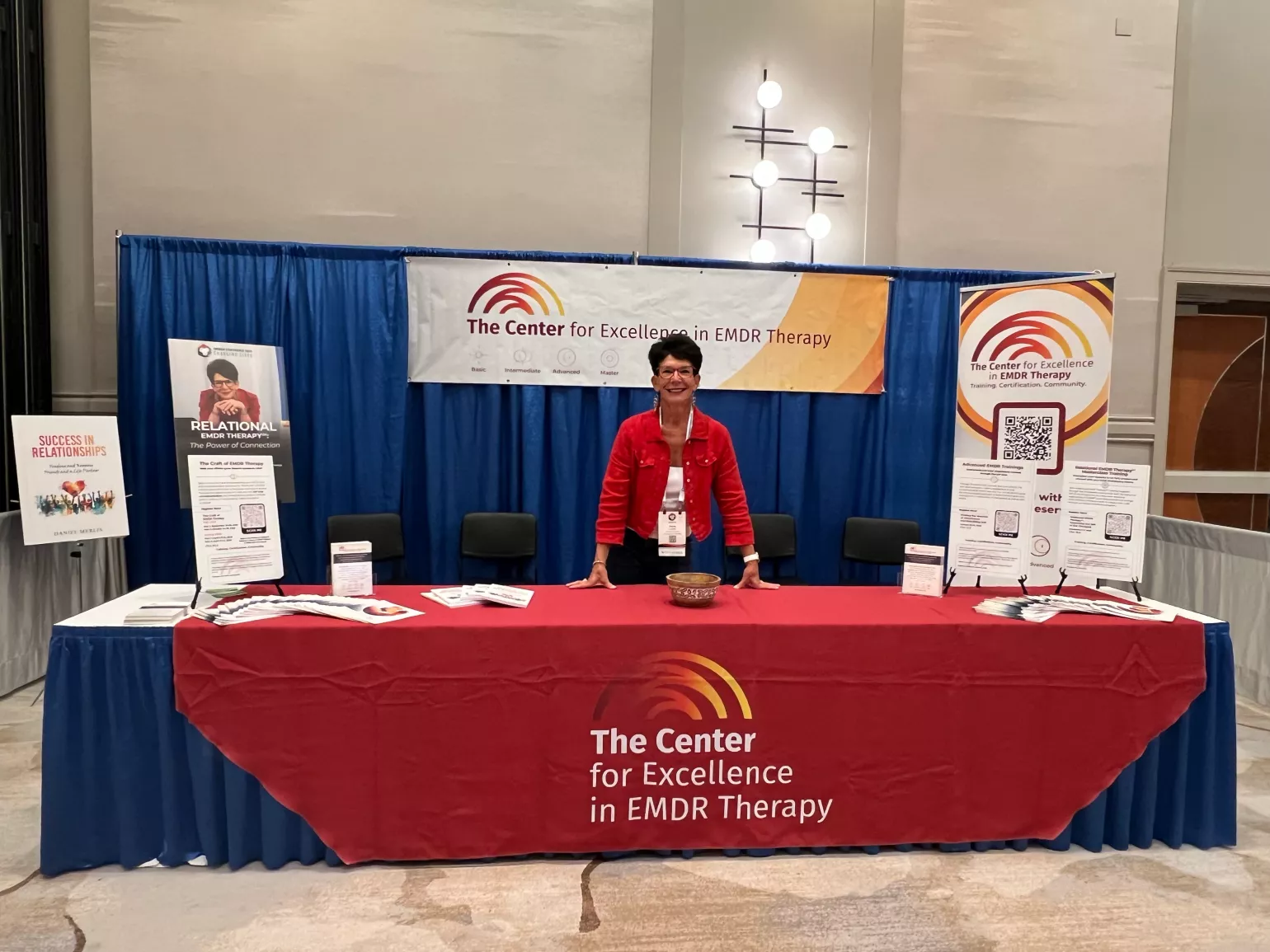
Healing Through Connection: Reflections on EMDR’s Evolution at the 2025 EMDRIA Conference
Attending the EMDRIA conference was a powerful experience for me, both professionally and personally. It wasn’t just about the content, but also about being in community with colleagues and friends.
There were many hugs exchanged, reconnecting with those I’ve worked with over the years, including those from the Institute, the EMDR Research Foundation, and the Humanitarian Assistance program. The sense of community was palpable.
One of the main takeaways from the conference was reflecting on the evolution of EMDR therapy across generations. We’re now seeing the transition from the first generation of EMDR therapists…from those of us who were deeply involved in the early days with Francine Shapiro’s vision of delivering EMDR with fidelity to the protocol…to the second generation.
The second generation is asking important questions: How do we apply EMDR in groups? How do we do EMDR intensives? What happens when we integrate different methodologies with EMDR? There’s a sense that while protocol fidelity is still important, we also need to evolve in how we apply the method to different situations and populations.
A big theme was about integrating EMDR with other therapeutic approaches, such as Relational EMDR Therapy®, which is what I spoke about at the conference. This speaks to the notion of developmental growth and change by reprocessing memories and by actively co-creating new, corrective experiences in the therapeutic relationship itself. We’re reminded that as clinicians, we are part of the reparative process for our clients. We’re not just helping them revisit their past, but also offering them something new: a relational experience that can help heal old wounds.
It became clear to me that much of the work we do as therapists is about providing an environment where clients can experience something they may have never had, secure attachment. Many of our clients have never been in a relationship where they felt seen, heard, or truly understood.
In therapy, that relational component is crucial. It’s not enough to only reflect back to them what they say or think. We need to be present in a way that allows them to “go there,” and lean into their pain, to trust us to hold space for their most vulnerable moments.
Trauma isn’t just about what happened, it’s also about the aloneness that accompanies the trauma. Many clients described the pain of not having a person they could turn to, someone who could truly be there for them.
As EMDR therapists, how we show up for our clients, especially those with attachment trauma, is central to their healing. Many of them haven’t had the experience of mutual, respectful relationships, and we have an opportunity and responsibility to offer that through our work. The magic is in those moments of connection, where healing truly happens and touches us both.
As EMDR continues to evolve, it’s clear that the work of healing is about more than just processing memories—it’s about the synergy of creating new experiences in real time that repairs the attachment wounds in trauma time.
#EMDRtherapy #EMDR #DeanyLaliotis #TheCenterforExcellenceinEMDRTherapy #EMDRIAConference